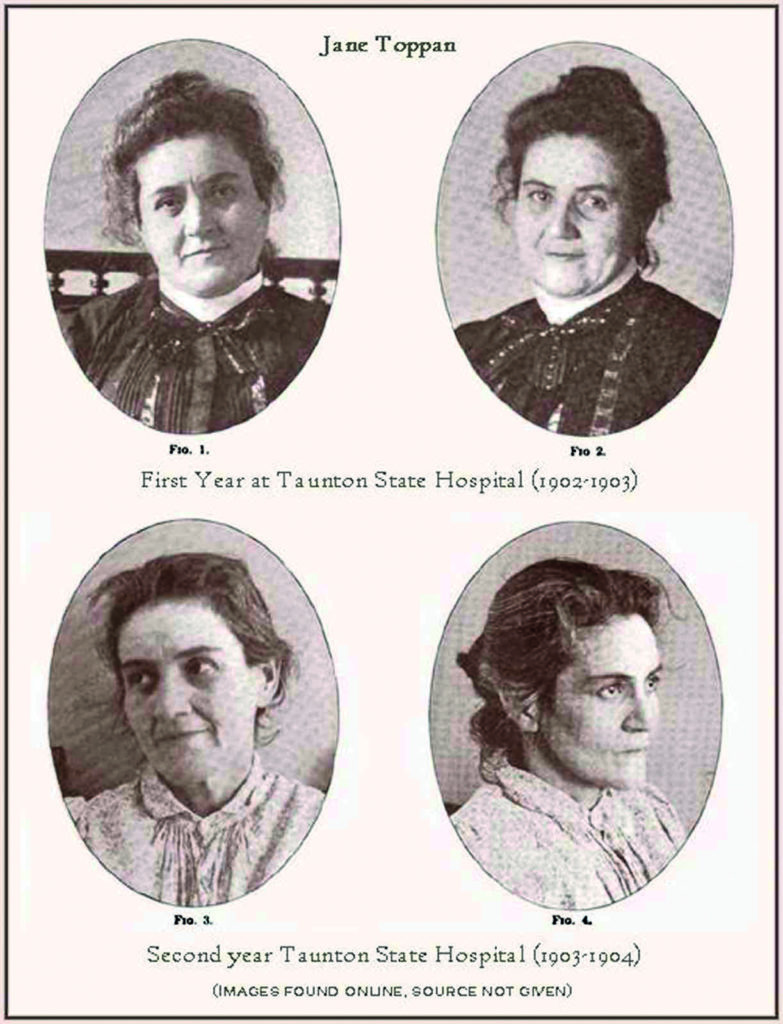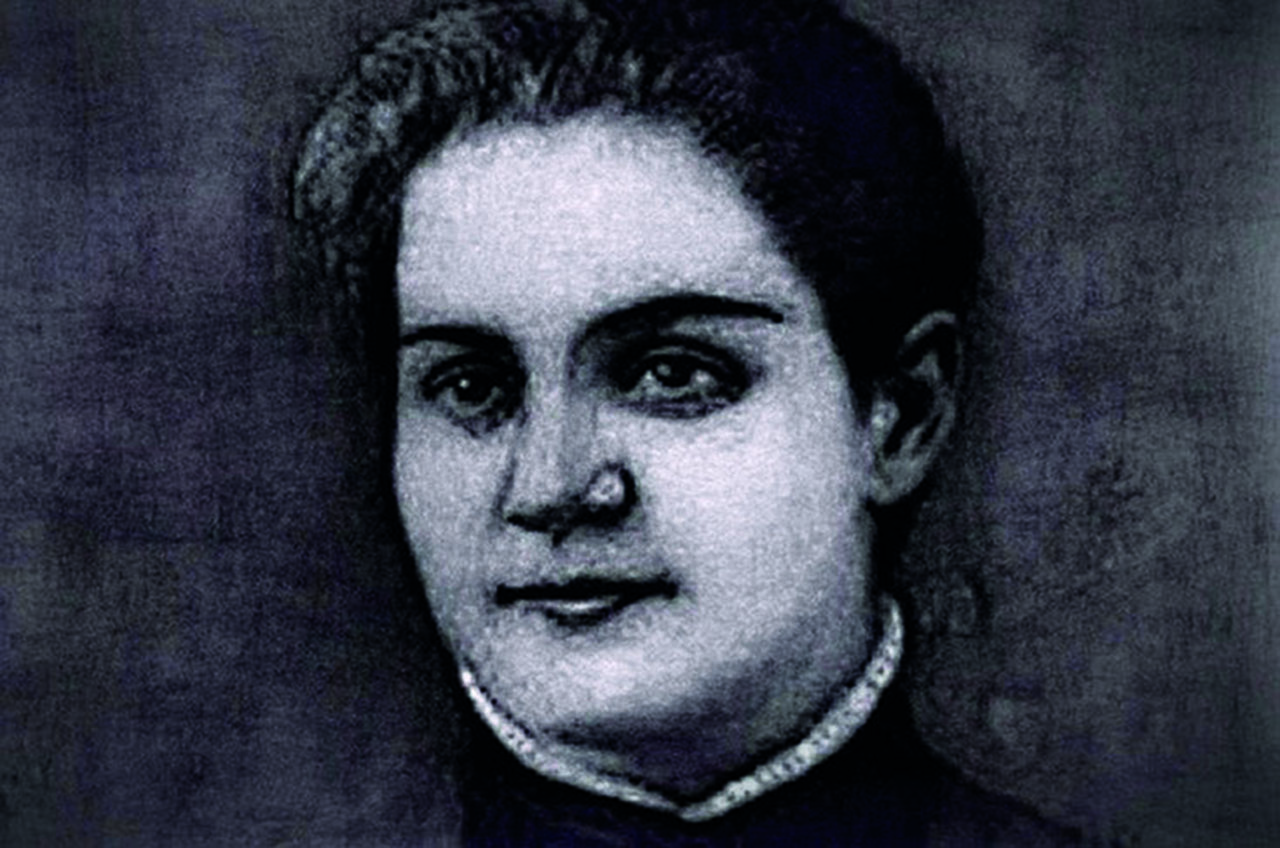Toppan tale
Deadlier than the male, meet the real-life female serial killer who inspired a new book by Ambrose Parry – and whose number of victims may never be known
It may come as a surprise that one of the most prolific serial killers in history was a woman but in truth it really shouldn’t, because it was precisely such misguided assumptions that allowed her to operate for so long – not merely without getting caught but without even raising suspicion.
During her training she became fascinated by the powerful effects of the drugs she administered
In New England in the late 19th century, Jane Toppan confessed to murdering 31 people, but as she stalked hospital wards and sickrooms for years, her activities undetected, her true death toll is estimated to have been in the hundreds. I took her story as the inspiration for The Art of Dying, not merely because of what she did and how she did it, but because her fate is intrinsically bound up with the role of women in 19th century society. It was the pervasive notion of women as the weaker sex that allowed Jane Toppan to act with relative impunity, the widely held view that they were innocent and feeble-minded that allowed her to get away with what she did for so long.
A woman’s pre-eminent role was considered to be that of wife and mother, maintaining the moral sanctity of the domestic sphere: “the angel in the house”. Those who failed to achieve this were scorned and pitied, looked down upon as redundant women, their biological failure a shame they were forced to carry. As Toppan said herself, if she had not been romantically disappointed, if she had had a husband and children to occupy her, she may never have embarked upon her murderous career.
Jane Toppan’s early life reads like the back story of a super-villain as written by Charles Dickens. Born Honora Kelley in Boston in 1857, her mother died of tuberculosis when she was still a young girl. Her father, an alcoholic, was known locally as Kelley the Crack. He was a tailor by trade and during a particularly unstable period, reputedly sewed his own eyelids shut. Unable to cope after the death of his wife he took his two youngest children, Honora and her sister Delia, to the Boston female asylum, left them there and never saw them again.
The asylum, a charitable institution, aimed to provide food, shelter and a basic education to the girls they took in. Those deemed suitable were then farmed out to be indentured servants to middle-class households looking for cut-price domestic help.
Honora was taken in by Mrs Ann Toppan and duly changed her name, although she was never formally adopted and was constantly reminded of her lower status within the family. She became jealous of the Toppans’ daughter Elizabeth, and developed a lasting antipathy towards her, coveting her position, possessions and ultimately her husband.
Toppan claimed to have had one serious suitor herself, who gave her a ring but then unceremoniously jilted her and married someone else, a disappointment she referred to frequently in subsequent years.
After Ann died, Toppan continued to work for her foster sister Elizabeth until relations between the two became strained. She left home at the age of 28 and, unfortunately for her victims, decided to become a nurse.
During her training she became fascinated by the powerful effects of the drugs she administered to her patients and began experimenting with morphine and atropine, often with fatal results. Suspicions about falsified charts, petty thefts and a reckless disregard for prescribed drug dosages followed her throughout her nurse training. One physician became concerned about the number of patients who died while she was on duty, but this concern was not shared by other doctors who thought of her as diligent and capable. She was eventually dismissed for breaking some trivial rule, many of her co-workers happy to see her go.
She then became a private nurse, which still provided access to patients but with even less supervision. She continued for more than a decade to poison patients but also extended her murderous habits to include friends and relatives, her foster sister Elizabeth becoming one of her victims. She generally preferred to kill people she knew. Whether she liked them or not seemed irrelevant. She was finally apprehended when she killed four members of the same family over a period of six weeks, provoking sufficient suspicion to warrant investigation. When she confessed, she mused that this – killing so many over such a short period of time – had been her greatest mistake.
She was charged with murder but at least initially maintained her innocence. All her supposed victims had died of natural causes, she said, with the exception of those who had taken their own lives. Before her trial, Dr Henry Stedman, an eminent psychiatrist, was asked to examine her. Under his questioning she made a full confession and admitted to killing 31 individuals under her care, but these were merely the ones she could remember. At no point did she express any remorse about what she had done. She claimed that it was a habit over which she had little control. As a result of Dr Stedman’s assessment, she was found not guilty on the grounds of moral insanity. She was committed to an asylum for the rest of her life, where, shortly after admission, she became convinced that she was being poisoned herself. This proved not to be the case and she died of pneumonia at the ripe old age of 81.

Given Toppan’s prolonged career, it is impossible to know with any certainty how many individuals died by her hand, and inevitably questions were asked about why she had evaded suspicion for so long.
The Journal of the American Medical Association admitted that “it is not flattering that such an individual could have passed so long undetected” but added that “homicidal instincts can exist with the most perfect apparent amiability”.
Toppan certainly hid her homicidal instincts well. She was generally well regarded, earning the nickname Jolly Jane because of her bubbly personality. But there was a malignity not far from the surface. She was adept at ingratiating herself with those in authority, but she was also known to be light-fingered and an inveterate liar. She delighted in gossip and spreading rumours about others to distract attention from her own misdemeanours.
But how did she pull the wool over the eyes of so many medical men? The medicine of the time played a large part, being less of an exact science than it is today. Death in all age groups occurred with a much greater frequency, and the cause often only guessed at. Many of Toppan’s patients were diagnosed as having died of heart failure or stroke. No one suspected poison.
This was partly due to her combining her medicaments. Morphine and atropine disguise the effects of each other, making poisoning difficult to recognise. She often rejoiced in how she could outwit the doctors dealing with the patients she dispatched.
The ease with which poisonous substances could be procured also played a part. Many highly toxic substances could be purchased from the local druggist – such as arsenic and strychnine – as well as the potent drugs that Toppan habitually used.
The fact that she was a woman also blinded those around her to what she was really up to, and was probably the factor that allowed her to hide in plain sight for so long. Criminality was generally considered to be a male trait, and prevailing notions about female fragility and lack of intellect meant that many female poisoners avoided suspicion and evaded detection. Due to their defined roles as homemaker, carer, teacher and nurse, it was unthinkable that they could subvert this position of trust in such a way.
The other obvious question is why did she do it? What motivated her to kill so many people over such a prolonged period of time? There were a variety of reasons. She killed her foster sister because she carried a long-standing resentment towards her and coveted her husband; she killed a friend because she wanted her job.
She claimed that she killed some of her victims to end what she saw as their suffering, although frequently the suffering she referred to was mourning for another relative that she had prematurely dispatched. “Poor thing, she was grieving herself to death,” she said of one of her final victims. “Her life wasn’t worth living for her anyway.”
She also harboured an antipathy towards the elderly. She claimed that there was no use in keeping old people alive, that some people were better off dead. Those who heard her express such sentiments believed she spoke in jest and certainly did not suspect she acted upon them.
However, the main reason she killed people was because she liked it. Her confession to Dr Stedman contained details that were truly shocking. She admitted that she was in the habit of climbing into bed beside the patient she had just poisoned, experiencing “voluptuous delight” and “the greatest conceivable pleasure” as they breathed their last. She experienced sexual excitement in the presence of someone who was dying and was driven by this desire more than any other.
This aspect of the case surprised me, as apparently it did Dr Stedman, who was initially reluctant to believe her, having never encountered anything like it before. I doubt that I could have manufactured a killer with such a bizarre and disturbing motivation. Plumbing the depths of my imagination would not have conjured such a creature.
But perhaps the most remarkable thing in the end is that while the whole world knows the name of Jack the Ripper, his infinitely more prolific female contemporary is forgotten. I suspect this is because the male predator – Jack the Ripper in particular – remains a source of fascination bordering on perverse reverence, while as a society we remain less able to accept the notion that a woman could be even more wicked, scheming and ruthless.
Significantly, Toppan’s name was not mentioned when the crimes of Beverley Allitt came to light in the 1990s, the nurse eventually confessing to the murders of four children and attempted murders of 13 more in her care. It is proof that when we forget history’s lessons, we are vulnerable to seeing them repeated.
The Art of Dying by Ambrose Parry is available in paperback (Canongate, £8.99). Ambrose Parry is a pseudonym for Dr Marisa Haetzman and Chris Brookmyre

Leave a reply
Your email address will not be published.